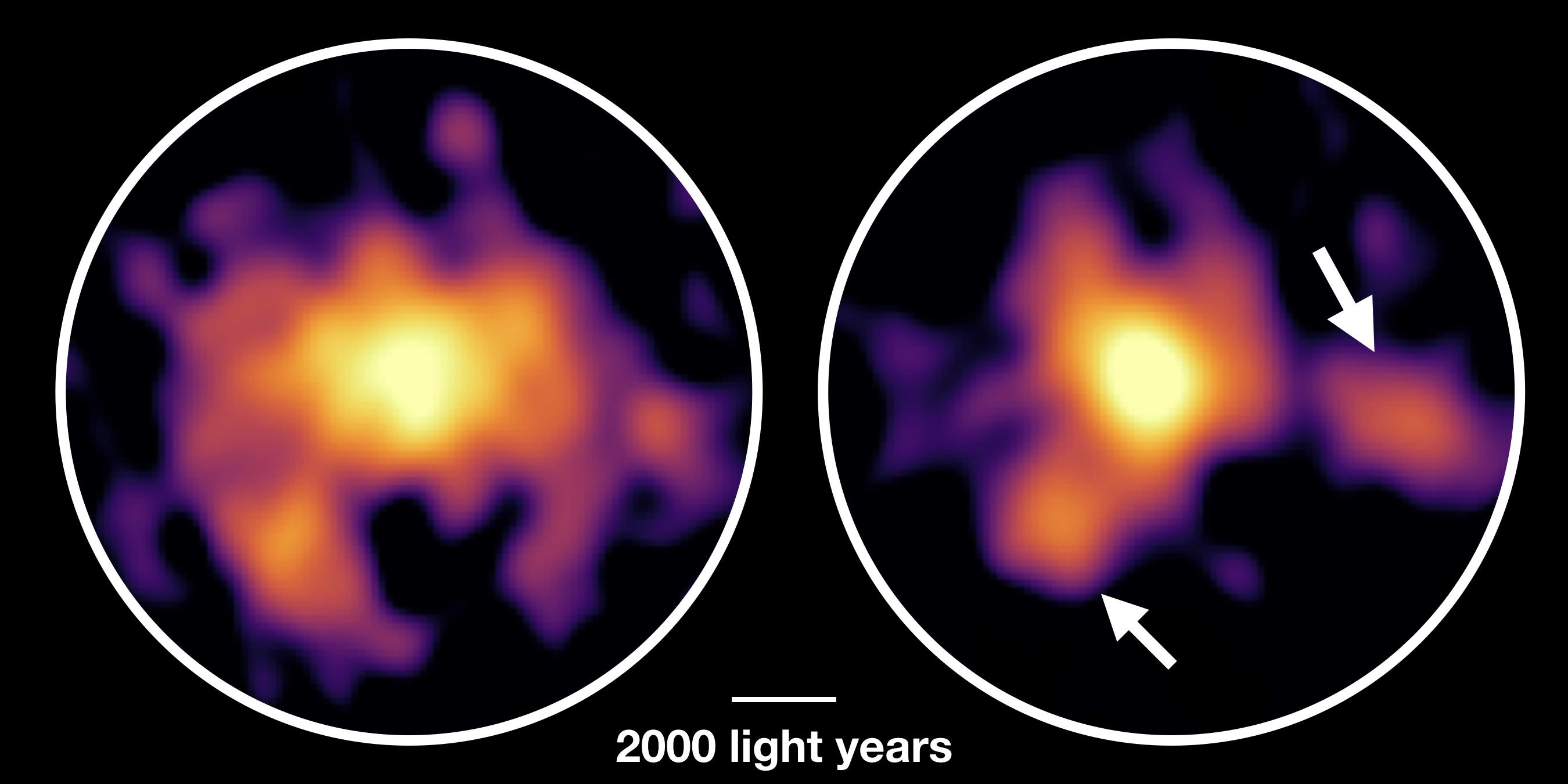Scientists discovered a huge unstable galaxy, located 12.4 billion light-years away from Earth. The newly discovered galaxy has a rapid star formation system, forming stars 1,000 times faster than the Milky Way galaxy. It’s not as messy as researchers expected it to be, although this incredibly huge pace of star formation is likely not to last.
Faster than the Milky Way
A team of researchers used the Atacama Large Millimeter/submillimeter Array (ALMA) observatory in Chile from which they caught the closest glimpse of the huge unstable galaxy called COSMOS-AzTEC-1. Such large galaxies, with the fast pace of star formation, are believed to be the predecessors of modern galaxies, one of which is the Milky Way. That said, scientists need to get a better understanding of such galaxies to learn how today’s galaxies formed and evolved.
Researchers discovered the galaxy 10 years ago, and have since known that it was rich in star-forming gas. However, they didn’t expect to find what they saw with ALMA in the new study.
“A real surprise is that this galaxy seen almost 13 billion years ago has a massive, ordered gas disk that is in regular rotation instead of what we had expected, which would have been some kind of a disordered train wreck that most theoretical studies had predicted,” Min Yun, an astronomer at the University of Massachusetts, Amherst, and co-author on the new work, said in a statement.
Also, the team discovered that the huge unstable galaxy had much more than just a dense star formation cloud of material, there were also additional blobs that contained star-forming gas at the center of the galaxy, making it faster than the Milky Way in star formation.
“We found that there are two distinct large clouds several thousand light-years away from the center,” Ken-ichi Tadaki, the study’s lead author and a researcher at the Japan Society for the Promotion of Science and Japan’s National Astronomical Observatory, said in the statement. “In most distant starburst galaxies, stars are actively formed in the center. So it is surprising to find off-center clouds.”
The researchers said that this rapid star formation comes from an inherent instability. In the vast majority of galaxies, clouds of gas are collapsing and in that way forming stars, which explode into supernovas that push the gas forward again, slowing the process of star formation. However, this galaxy has a gravity that overcomes the process. The gas that collapses to create the stars is not being pushed as outward as is necessary for the star formation process to slow down.
Answer to a long-asked question
Until now, researchers haven’t been able to answer the question regarding the rapid star formation in early galaxies.
“How these galaxies have been able to amass such a large quantity of gas in the first place and then essentially turn the entire gas reserve into stars in the blink of an eye, cosmologically speaking, was a completely unknown question about which we could only speculate,” Yun said. “We have the first answers now.”
Researchers further detail their study in the journal Nature, describing that if other early universe galaxies had a structure like this one, there would be a lot of gas before the galaxy would blast the stars out, even though the team is still not sure how all that gas was built up.
According to the researchers, the galaxy will likely be completely consumed in the next 100 million years, being 10 times faster as opposed to other star-forming galaxies, faster than the Milky Way.





